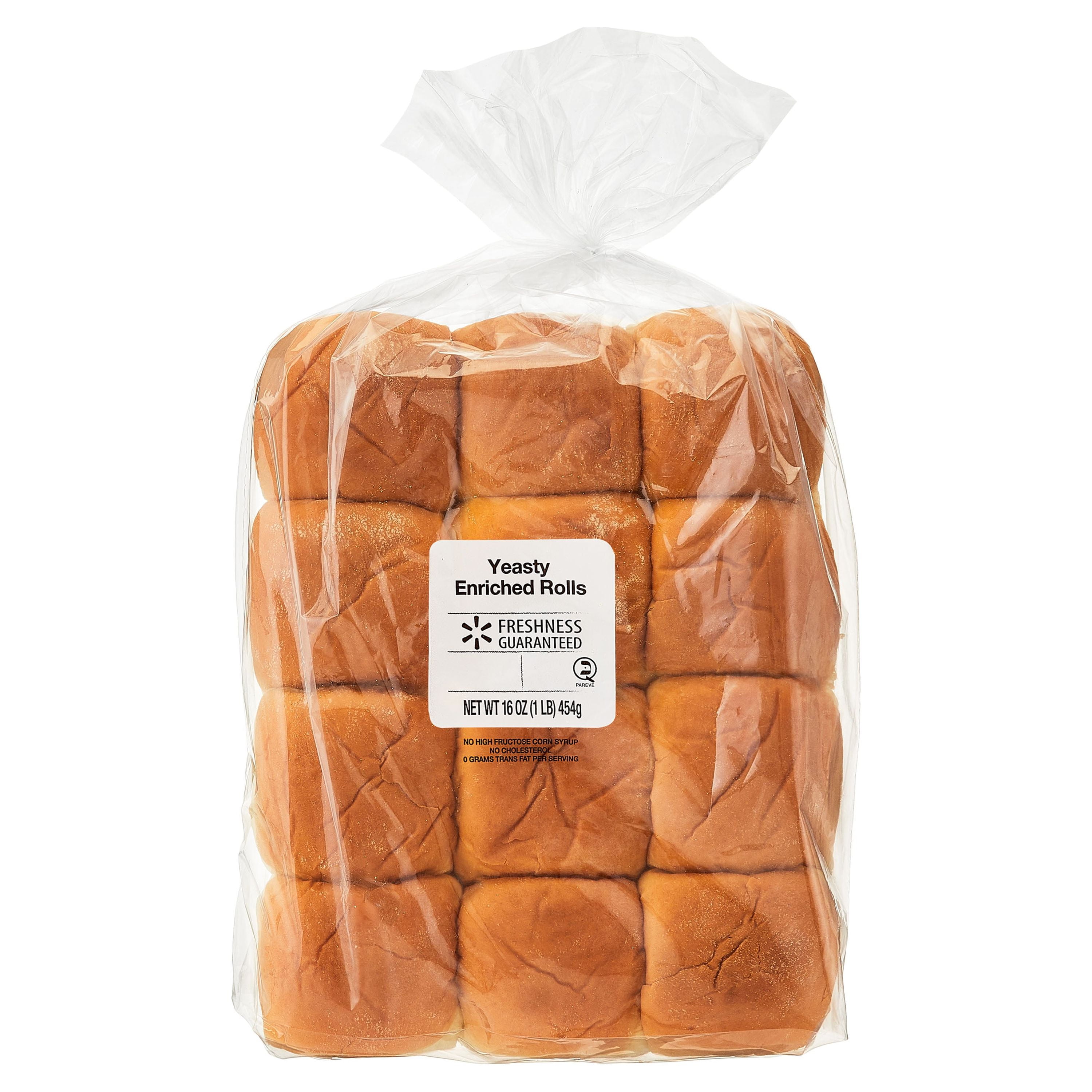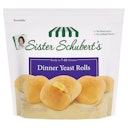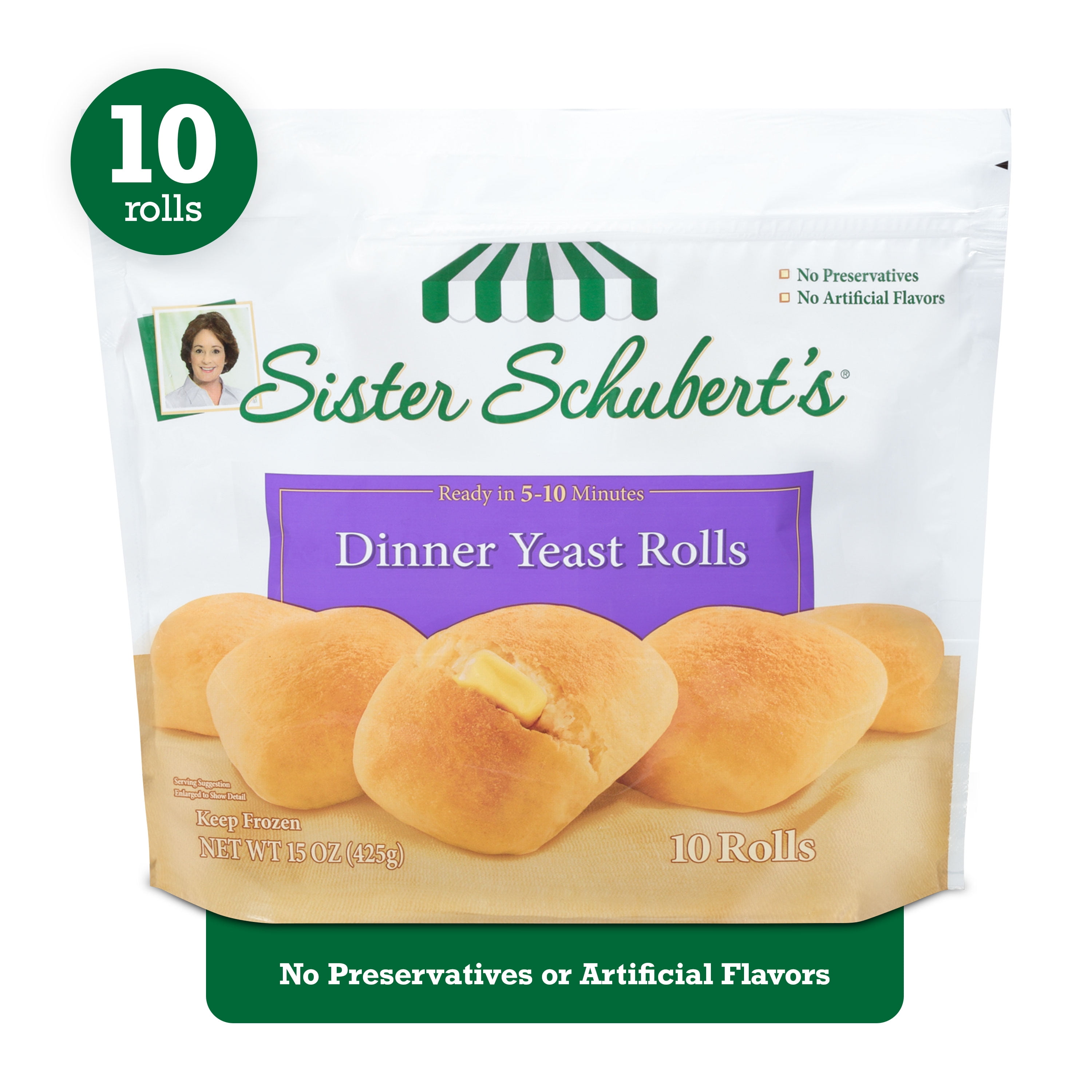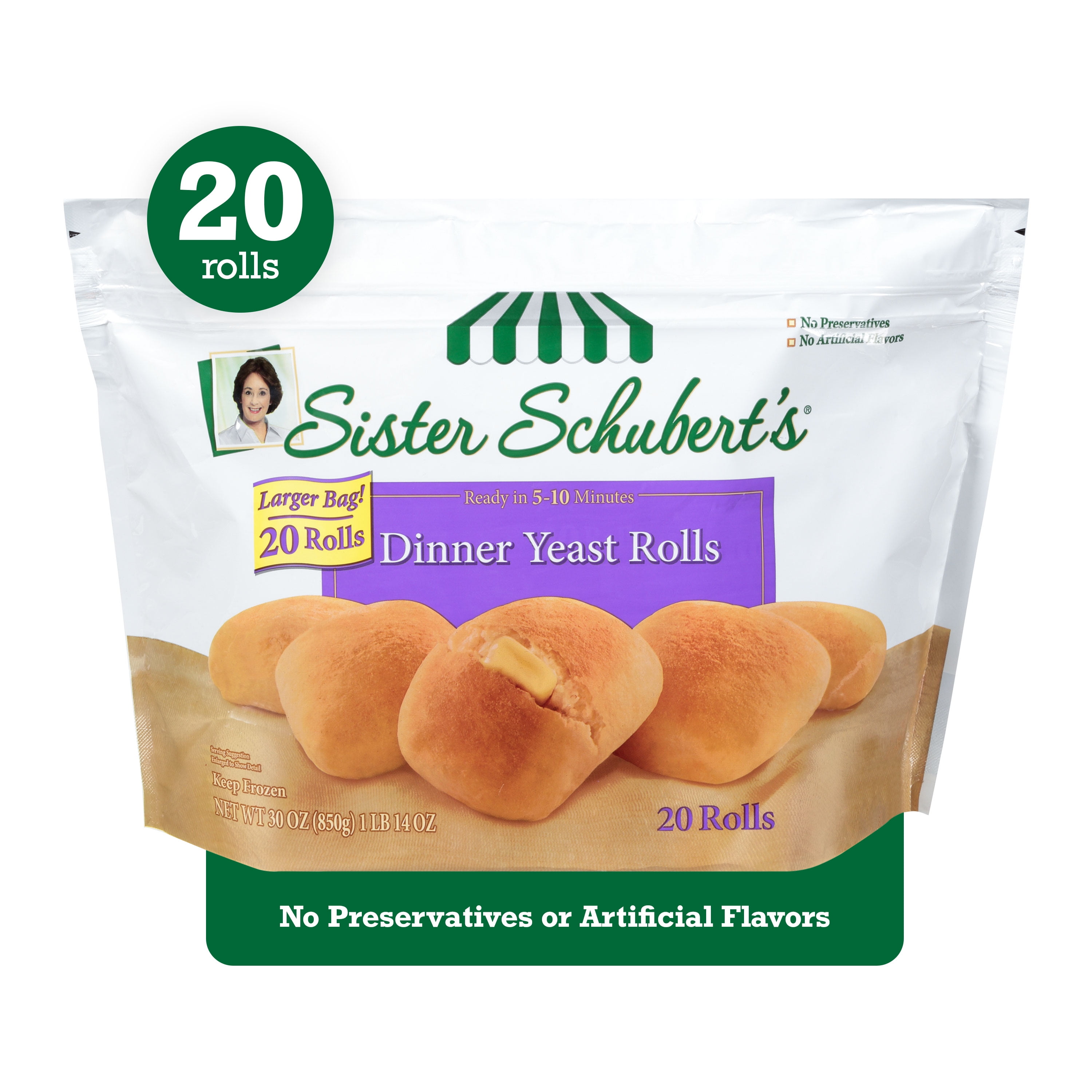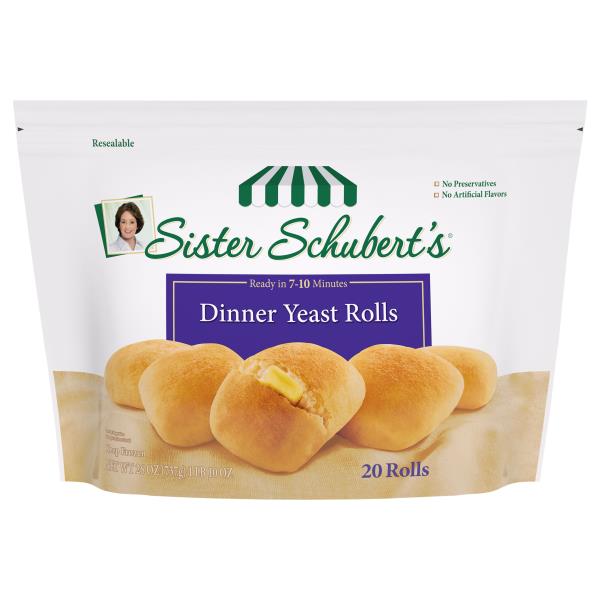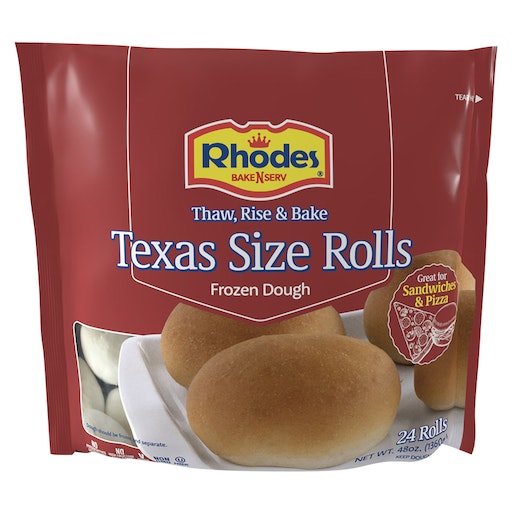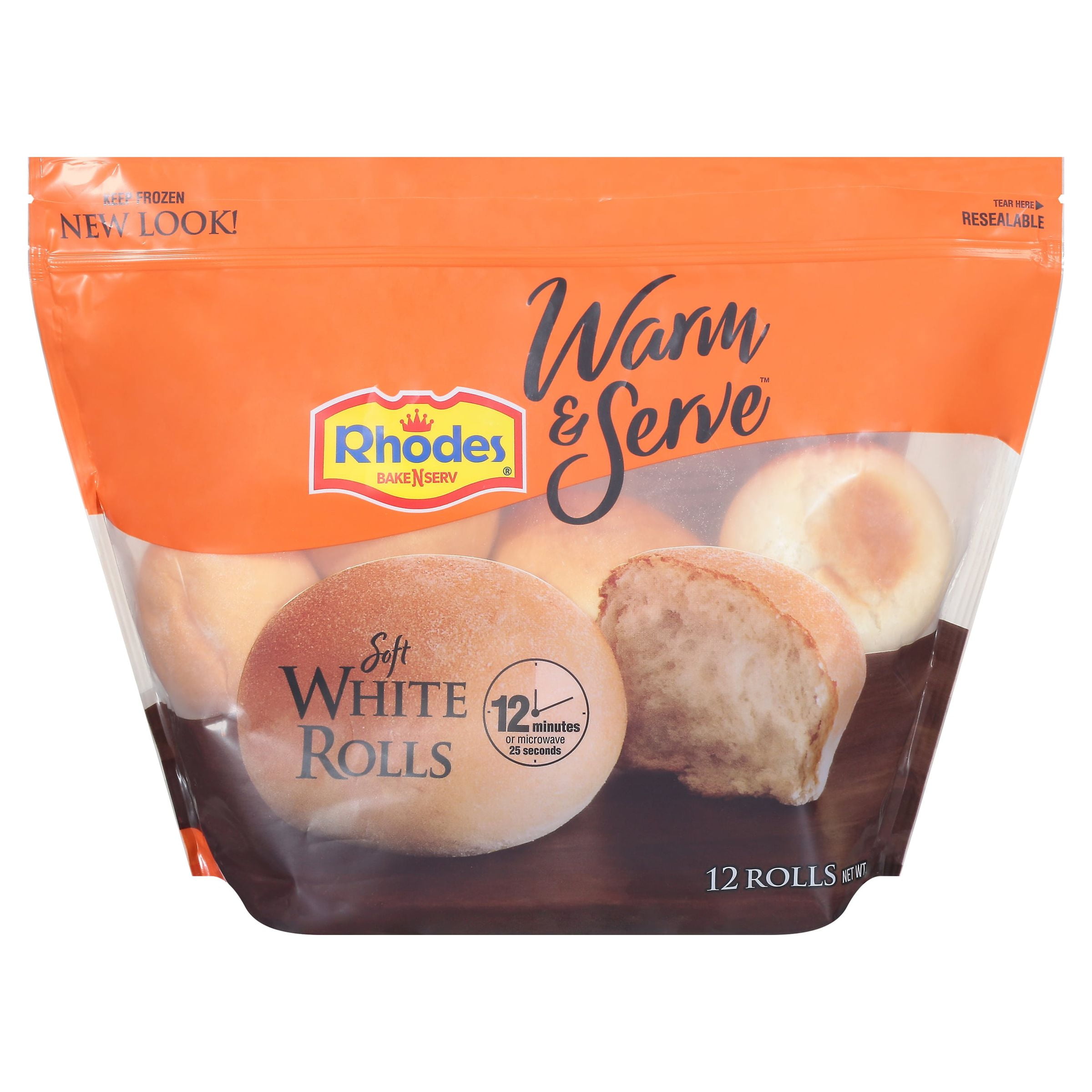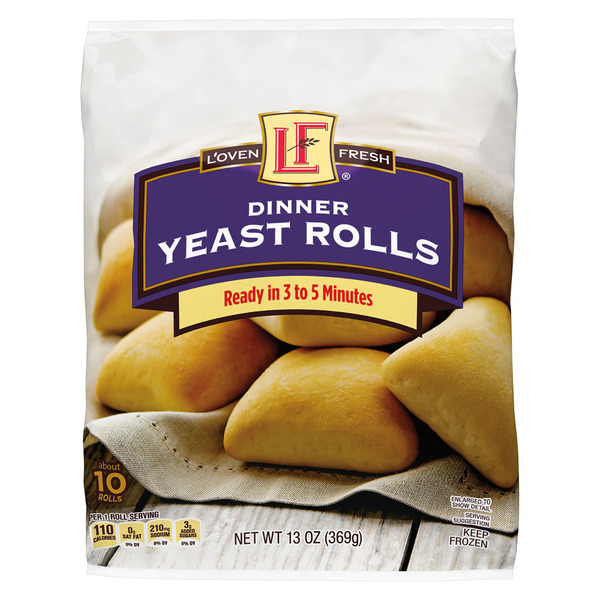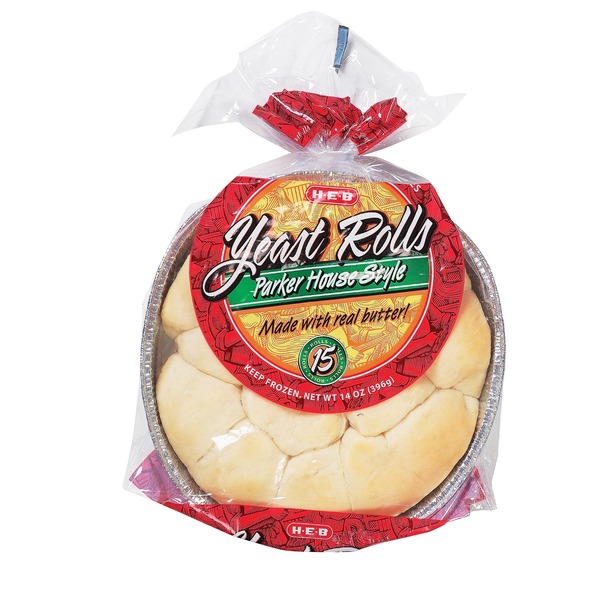Yeast Roll
Yeast rolls are a type of bread product that are a staple in many homes due to their soft, fluffy texture and slightly sweet flavor. They're made by combining bread ingredients and adding yeast, which causes the dough to rise and gives the rolls their notable fluffiness. They're perfect for dinner, served alongside your favorite dishes, or for breakfast, paired with butter and jam.
Apart from their great taste, yeast rolls also have an undeniable comfort factor. Their rich, warm aroma that fills the kitchen while they're baking makes the process of making them almost as satisfying as eating them. Whether you prefer them plain or slathered in butter, they are indeed a versatile treat for the whole family.
77%
CARBS
13%
FAT
10%
PROTEIN
100 Yeast Roll Products
Freshness Guaranteed Enriched Yeasty Rolls
Sister Schubert's Dinner Yeast Rolls
Sister Schubert's Sister Schubert's Dinner Yeast Roll
Sister Schubert's Dinner Yeast Rolls
Sister Schubert's Dinner Yeast Rolls (40 ct.)
Sister Schubert's Dinner Yeast Rolls
Rhodes Bake-N-Serv Texas Size Rolls, Frozen Dough
Rhodes Bake N Serv Soft White Wns Dinner Rolls Rolls, 12 Ct
L'oven Fresh Yeast Dinner Rolls
H-E-B Yeast Rolls Parker House Style
Yeast Roll FAQ
Cooking yeast rolls requires a fair amount of patience due to the proofing process, but the end result is well worth the time. Common questions come up often about the type of yeast to use, rising times, kneading techniques, knowing when the rolls are ready, and whether the dough can be prepared ahead of time. Others also worry about their rolls not rising as expected, or turning out too dense.
One common mistake people make is not giving the yeast enough time to activate or not using fresh yeast, which is key to making the rolls fluffy and light. Yeast should be allowed to bloom until it's frothy, which typically takes about ten minutes. Overkneading or underkneading the dough can also affect the texture of the rolls.
To make the most of the yeast rolls, make sure you give them the time they need to rise. A warm, moist environment is perfect for yeast activity. Once the rolls are cooked, they are best eaten warm, as they lose their softness and moistness as they cool. A generous pat of butter while they are still hot helps to keep them moist.
One little-known trick is room temperature affects yeast activity. In colder weather, let the dough rise in an oven that was preheated to a low temperature and then turned off.
What type of yeast is best for yeast rolls?
How do I know when the dough has risen enough?
Why aren’t my yeast rolls rising?
My yeast rolls are too dense. What did I do wrong?
Can I prepare the yeast roll dough ahead of time?
My yeast didn’t froth when activated. What went wrong?
Can I use all-purpose flour for making yeast rolls?
Does the type of sugar used to feed the yeast matter?
How long should I knead the dough for yeast rolls?
I don't have a stand mixer, can I knead by hand?
Substitutes

Dinner Roll

Multigrain Roll

Dinner Roll Dough
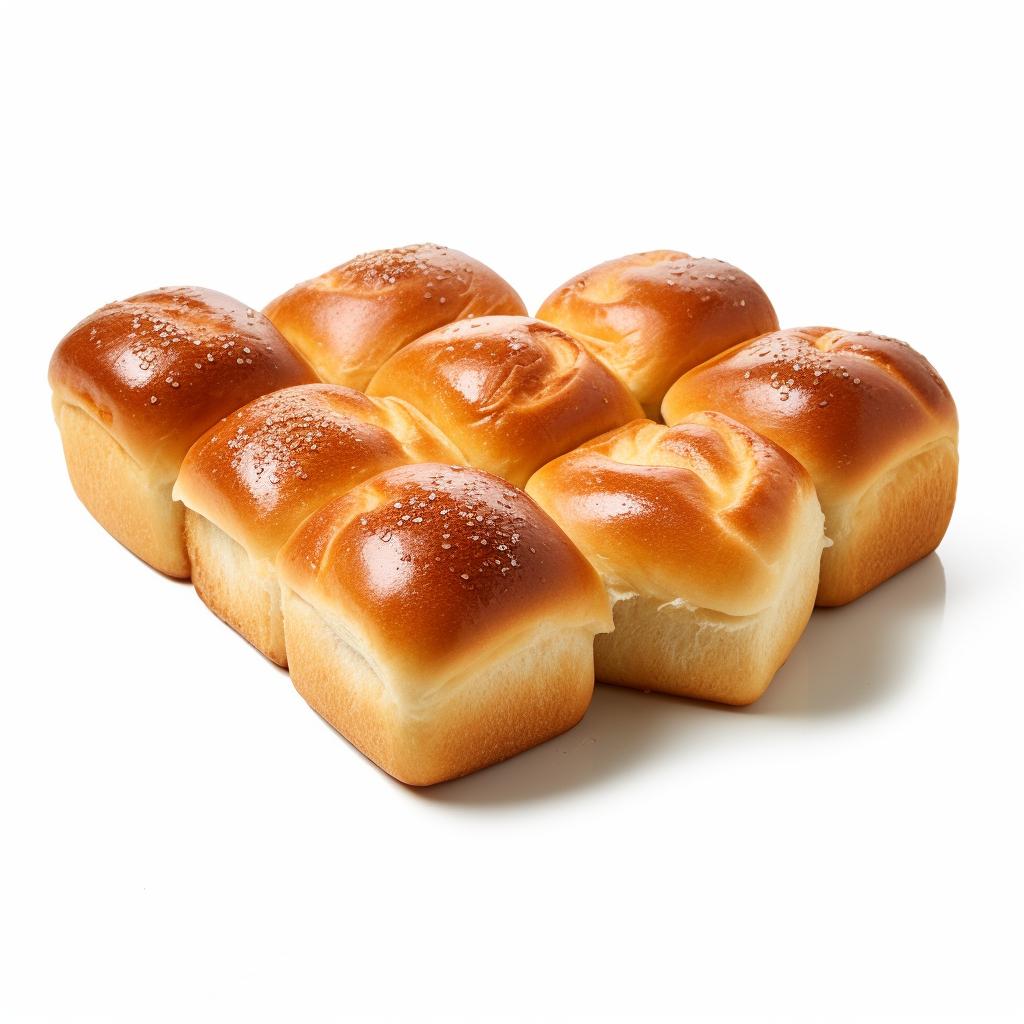
Parker House Rolls

Potato Roll

Sourdough Roll

Gluten Free Roll

Ciabatta Roll

Herb Roll

Rolls
See All
Health Info
Macros
22g
CARBS
3g
FAT
3g
PROTEIN
Allowed on these diets
LOW FAT
HIGH CALCIUM
VEGETARIAN
Contains these allergens
MILK
WHEAT

